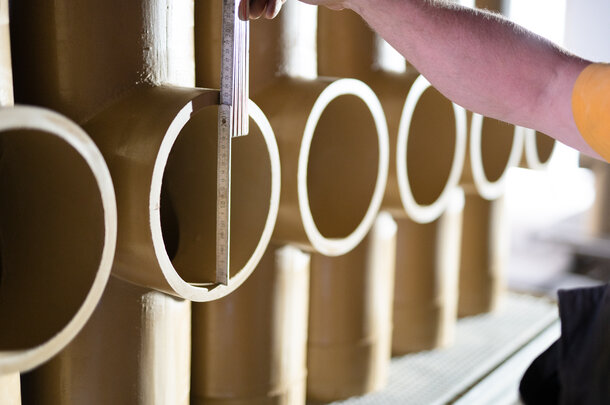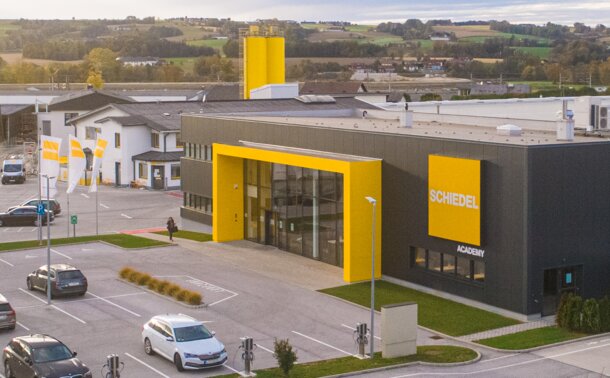The naturally occurring and inorganic material clay is the main component of ceramics. This natural product has many properties and advantages that people like to make use of nowadays.

As the only element that penetrates the building envelope vertically, it is exposed to enormous thermal and chemical stresses on a daily basis. At the same time, it has to meet the strict requirements placed on the components of modern buildings. Experience shows that ceramic is the ideal, natural material for chimneys in terms of resilience, safety and sustainability.

Schiedel has a two-pronged approach to quality assurance. On the one hand, there are test procedures that are required by CE certification and, on the other, test procedures to safeguard our standards. These are also measurement and monitoring procedures developed and introduced specifically for our processes.
Schiedel has a two-pronged approach to quality assurance. On the one hand, there are test procedures that are required by CE certification and, on the other, test procedures to safeguard our standards. These are also measuring and monitoring procedures developed and introduced specifically for our processes. To measure the capillary and diffuse resistance of our pipes, a test procedure for ongoing production using ultrasound was developed and introduced.
In other industries, this method is used to detect defects. All Schiedel systems meet the legal requirements. These are tested and documented by national approvals, e.g. from the German Institute for Building Technology in Berlin, and now increasingly with European approvals, e.g. ETA (European Technical Assessments) from the OIB Österreiches Institut für Bautechnik in Vienna.

Of course, further consistent optimization of the CO₂ footprint and cost optimization will also be at the top of our agenda in the coming years. We are currently working with selected partners on innovative filter solutions to reduce up to 95% of the fine dust particles produced by wood-burning stoves. We intend to offer these in several countries in the near future. One of the most exciting and currently most visionary topics in research and development is the search for alternative, renewable materials for our products.

As Europe's market leader in chimney and gas flue systems, we are constantly setting benchmarks in functional design. For example with the innovative KINGFIRE stove/flue gas systems. These consist of an air-independent fireplace insert and a directly attached ABSOLUT chimney: stove and chimney = one!
As Europe's market leader in chimney and gas flue systems, we are constantly setting benchmarks in functional design. For example with the innovative KINGFIRE stove/flue gas systems. These consist of an air-independent fireplace insert and a directly attached ABSOLUT chimney: stove and chimney = one! The optional Schiedel combustion control automatically regulates the combustion process of the KINGFIRE models GRANDE SC, LINEARE SC or RONDO SC based on the combustion temperature.
This ensures the optimum supply of combustion air in every combustion phase and offers a noticeable plus in environmental protection and efficiency, with optimum fuel utilization and maximum efficiency. A Schiedel KINGFIRE stove system creates added value in the new home: more space in the living room and at the same time more comfort and safety in an attractive design.